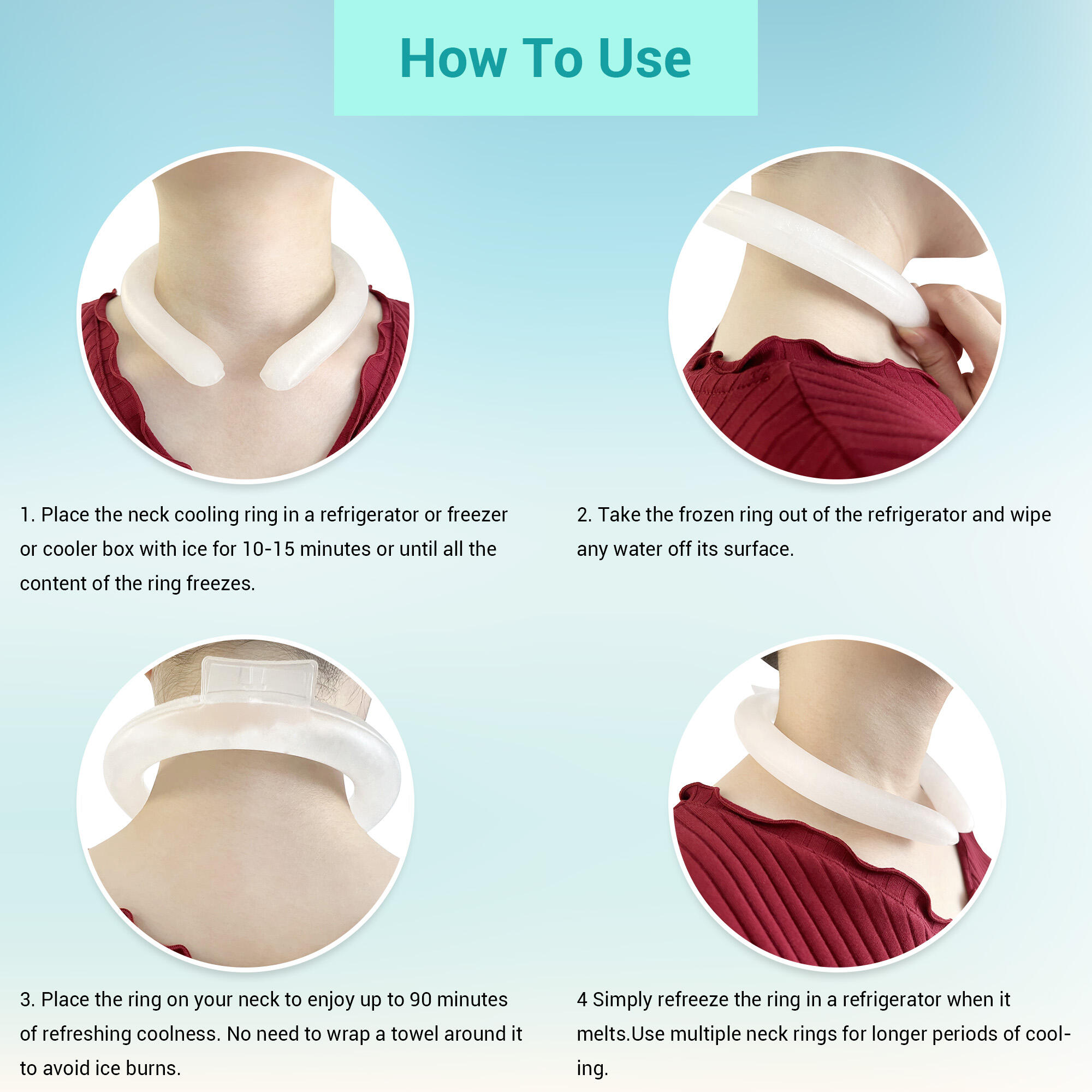Can Cold Compresses Help with Headaches and Migraines?
Headaches and migraines are some of the most common health problems experienced by people worldwide. While occasional headaches may be mild and manageable, chronic headaches or migraines can disrupt daily life, reduce productivity, and significantly affect well-being. Many individuals turn to medication for relief, but there is increasing interest in natural, non-pharmaceutical remedies. One of the simplest and most widely used methods is the application of cold compresses.
Cold compresses have been used for centuries in various forms of therapy. They are valued for their ability to reduce inflammation, numb pain, and provide immediate soothing effects. When applied to the head, neck, or other relevant areas, cold compresses may help relieve headache and migraine symptoms by influencing circulation and calming nerve activity. But how effective are cold compresses in practice, and what is the best way to use them? This article provides an in-depth exploration of their benefits, limitations, and applications.
Understanding Headaches and Migraines
Headaches can be broadly categorized into primary and secondary types. Primary headaches include migraines, tension headaches, and cluster headaches. Secondary headaches are caused by underlying conditions such as sinus infections, dehydration, or trauma. Migraines are particularly complex, often involving severe throbbing pain on one side of the head and additional symptoms such as nausea, light sensitivity, and visual disturbances.
The exact causes of migraines are not fully understood, but they are believed to involve a combination of genetic, neurological, and vascular factors. Regardless of the underlying trigger, the pain often results from dilated blood vessels, inflammation, or overstimulated nerves. Cold compresses can target these factors by cooling the affected area, constricting blood vessels, and reducing the activity of pain signals.
How Cold Compresses Work
The principle of cold therapy is based on vasoconstriction and nerve modulation. Applying cold compresses to the skin causes blood vessels to narrow, reducing blood flow to the area. For headaches and migraines, this effect helps reduce the throbbing sensation linked to dilated vessels.
Cold temperatures also slow down nerve conduction, which means fewer pain signals are transmitted to the brain. Additionally, the cooling sensation provides a numbing effect, making the pain feel less intense. These mechanisms together explain why cold compresses are often effective for headache relief.
Benefits of Using Cold Compresses for Headaches and Migraines
Immediate Pain Relief
One of the most important benefits of cold compresses is their ability to provide quick pain relief. Many people report feeling better within minutes of applying a compress to their forehead, temples, or the back of their neck. This makes cold compresses a practical first-line response during the onset of a headache or migraine.
Non-Pharmaceutical Option
Cold compresses are a drug-free solution, making them ideal for individuals who wish to avoid medication or who cannot tolerate certain drugs. They are safe for regular use and do not carry the risk of side effects that medications often bring, such as drowsiness or digestive issues.
Reducing Inflammation
Migraines and some headaches involve inflammatory processes in blood vessels and surrounding tissues. Cold compresses help reduce this inflammation, thereby lowering pain levels and discomfort.
Relaxation and Comfort
Cold compresses not only relieve pain but also provide a soothing and calming sensation. This is especially valuable for tension headaches that are triggered by stress or anxiety. The act of lying down with a cold compress on the head or neck can create a relaxing environment that aids recovery.

Cost-Effective and Accessible
Cold compresses are affordable and can be easily prepared at home. Ice packs, gel packs, or even a towel soaked in cold water can be used. Their accessibility makes them one of the simplest remedies available for headache and migraine sufferers.
How to Use Cold Compresses Effectively
Choosing the Right Placement
The effectiveness of cold compresses depends on where they are applied. For migraines, placing them on the forehead, temples, or back of the neck often works best. For tension headaches, applying cold compresses to the shoulders or base of the skull may provide greater relief.
Duration of Application
Cold compresses should generally be used for about 15 to 20 minutes at a time. After a short break, they can be reapplied if necessary. Prolonged application without breaks may cause skin irritation or even frostbite, so moderation is important.
Preparation Methods
There are several ways to prepare cold compresses. Ice packs wrapped in a cloth, gel packs kept in the freezer, or even a bag of frozen vegetables can all serve as effective options. For sensitive skin, it is best to avoid direct contact with ice by wrapping the compress in fabric.
Frequency of Use
Cold compresses can be used multiple times throughout the day, depending on the severity of symptoms. They are most effective when applied at the onset of a headache or migraine, as early intervention helps prevent the pain from worsening.
Cold Compresses Versus Heat Therapy
It is important to recognize that while cold compresses are effective for many people, some may respond better to heat therapy. Heat works by relaxing tense muscles, improving blood circulation, and reducing stiffness, making it particularly effective for tension-related headaches. Cold compresses, on the other hand, are more effective for migraines and headaches associated with inflammation.
Some individuals find alternating between cold and heat provides the best relief, addressing both vascular and muscular components of the pain.
Limitations of Cold Compress Therapy
While cold compresses are beneficial, they are not a cure for chronic headaches or migraines. They provide temporary relief but do not address underlying causes. Individuals experiencing frequent or severe headaches should consult a healthcare professional for diagnosis and long-term treatment.
Additionally, cold compresses may not be suitable for everyone. People with circulatory conditions, cold sensitivity, or certain skin issues should use them cautiously or seek alternatives.
Research Supporting Cold Compress Use
Scientific research supports the use of cold therapy in managing headaches and migraines. Studies have shown that applying cold packs to the carotid arteries in the neck reduces migraine pain by lowering blood flow to the head. Surveys also reveal that many patients find cold compresses to be an effective and safe self-care method. While more large-scale studies are needed, existing evidence suggests that cold compresses are a practical tool for symptom relief.
Lifestyle Practices That Complement Cold Compress Use
Cold compresses are most effective when combined with healthy lifestyle practices. Staying hydrated is critical, as dehydration is a common trigger for headaches. Maintaining regular sleep patterns helps prevent fatigue-related headaches. Stress management techniques such as meditation, deep breathing, or yoga can reduce the likelihood of tension headaches. Limiting alcohol and caffeine consumption may also lower the frequency of migraines. By combining these practices with cold compresses, individuals can better manage their symptoms and improve overall well-being.
Conclusion
Cold compresses offer a simple, affordable, and effective way to manage headaches and migraines. By constricting blood vessels, numbing nerve signals, and reducing inflammation, they provide fast relief without the need for medication. While they are not a cure and may not work for everyone, cold compresses remain a valuable tool for managing pain and improving comfort during headache or migraine episodes.
To achieve the best results, they should be used properly and safely, combined with other preventive strategies and medical treatments as needed. With their accessibility, non-invasive nature, and proven effectiveness, cold compresses continue to be one of the most practical remedies for headaches and migraines.
FAQ
How long should cold compresses be applied for a headache?
Cold compresses should be applied for about 15 to 20 minutes at a time, with breaks in between to prevent skin irritation.
Where should I place cold compresses for migraine relief?
They are most effective when applied to the temples, forehead, or back of the neck.
Can cold compresses replace medication for migraines?
Cold compresses provide relief but should not be considered a replacement for medication in severe or chronic cases. They work best as a complementary therapy.
Are cold compresses safe for everyone?
Most people can safely use cold compresses, but those with circulatory problems or cold sensitivity should consult a healthcare professional before use.
Do cold compresses work for all types of headaches?
They are most effective for migraines and certain tension headaches, but their effectiveness may vary depending on the individual and the cause of the headache.
Table of Contents
- Can Cold Compresses Help with Headaches and Migraines?
- Understanding Headaches and Migraines
- How Cold Compresses Work
- Benefits of Using Cold Compresses for Headaches and Migraines
- How to Use Cold Compresses Effectively
- Cold Compresses Versus Heat Therapy
- Limitations of Cold Compress Therapy
- Research Supporting Cold Compress Use
- Lifestyle Practices That Complement Cold Compress Use
- Conclusion
- FAQ

